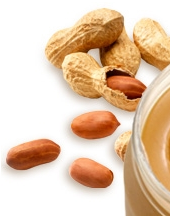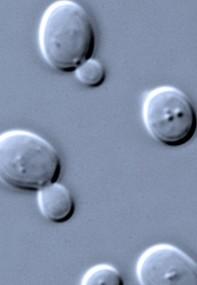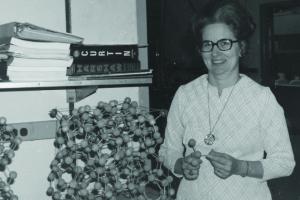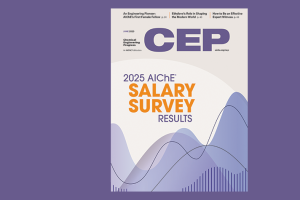 Popular Science
Popular Science magazine has named MIT
Assistant Professor of Chemical Engineering Christopher Love, 33, to its annual
"Brilliant 10" list of top young scientists.
Any researcher who had wanted to conduct multiple experiments on a single cell over time? Impossible-- the technology didn't exist. At the cellular level, there was only one view: the whole cell population. The single cell was out of reach-- that its behavior was unique and might be effecting surrounding cells was only conjecture.

So Christopher Love and
his lab created
techniques that enabled researchers to finally observe an individual cell--"take a picture of it, ask who it is." And watching the cell's behavior over time finally allowed science to solve many medical mysteries:
immunity to HIV infection, accurately diagnosing
deadly allergies, and
improve drug production, making it less expensive. Popsci described his method:
He takes the equivalent of an ice-cube tray and fills each well with one or two living immune cells. Over the course of an hour, he blots the cells with a material that captures the chemicals they have released. Repeated over time, the process can identify the secretions and how they change.
Using his imprinting technique, Love documented that immunologists determining an HIV treatment's effectiveness were often looking at the wrong indicators.
He also found a new method of analyzing telltale markers that immune cells

release in the presence of a food allergen. Traditional tests looking for antibodies lead to many false positives, but his test screens an immune cell's allergic response for small proteins known as cytokines. This has lead to more accurate results.

In March he uncovered an overlooked property of yeast, which is used by many pharmaceutical companies to produce protein-based drugs like growth factors and antibodies. Love found that although laboratory yeast are genetically identical, the cells don't behave like it; certain yeast cells secrete large amounts of a desired compound, others make nothing at all. The finding could give drug companies a tool to bring down costs significantly.
His research reveals the cell's more nuanced behavior and has paved the way for significant therapeutic advances.
Complete Popsci article.
 Popular Science magazine has named MIT Assistant Professor of Chemical Engineering Christopher Love, 33, to its annual "Brilliant 10" list of top young scientists.
Any researcher who had wanted to conduct multiple experiments on a single cell over time? Impossible-- the technology didn't exist. At the cellular level, there was only one view: the whole cell population. The single cell was out of reach-- that its behavior was unique and might be effecting surrounding cells was only conjecture.
Popular Science magazine has named MIT Assistant Professor of Chemical Engineering Christopher Love, 33, to its annual "Brilliant 10" list of top young scientists.
Any researcher who had wanted to conduct multiple experiments on a single cell over time? Impossible-- the technology didn't exist. At the cellular level, there was only one view: the whole cell population. The single cell was out of reach-- that its behavior was unique and might be effecting surrounding cells was only conjecture.
 So Christopher Love and his lab created techniques that enabled researchers to finally observe an individual cell--"take a picture of it, ask who it is." And watching the cell's behavior over time finally allowed science to solve many medical mysteries: immunity to HIV infection, accurately diagnosing deadly allergies, and improve drug production, making it less expensive. Popsci described his method:
So Christopher Love and his lab created techniques that enabled researchers to finally observe an individual cell--"take a picture of it, ask who it is." And watching the cell's behavior over time finally allowed science to solve many medical mysteries: immunity to HIV infection, accurately diagnosing deadly allergies, and improve drug production, making it less expensive. Popsci described his method:
 release in the presence of a food allergen. Traditional tests looking for antibodies lead to many false positives, but his test screens an immune cell's allergic response for small proteins known as cytokines. This has lead to more accurate results.
release in the presence of a food allergen. Traditional tests looking for antibodies lead to many false positives, but his test screens an immune cell's allergic response for small proteins known as cytokines. This has lead to more accurate results.
 In March he uncovered an overlooked property of yeast, which is used by many pharmaceutical companies to produce protein-based drugs like growth factors and antibodies. Love found that although laboratory yeast are genetically identical, the cells don't behave like it; certain yeast cells secrete large amounts of a desired compound, others make nothing at all. The finding could give drug companies a tool to bring down costs significantly.
His research reveals the cell's more nuanced behavior and has paved the way for significant therapeutic advances.
Complete Popsci article.
In March he uncovered an overlooked property of yeast, which is used by many pharmaceutical companies to produce protein-based drugs like growth factors and antibodies. Love found that although laboratory yeast are genetically identical, the cells don't behave like it; certain yeast cells secrete large amounts of a desired compound, others make nothing at all. The finding could give drug companies a tool to bring down costs significantly.
His research reveals the cell's more nuanced behavior and has paved the way for significant therapeutic advances.
Complete Popsci article.





